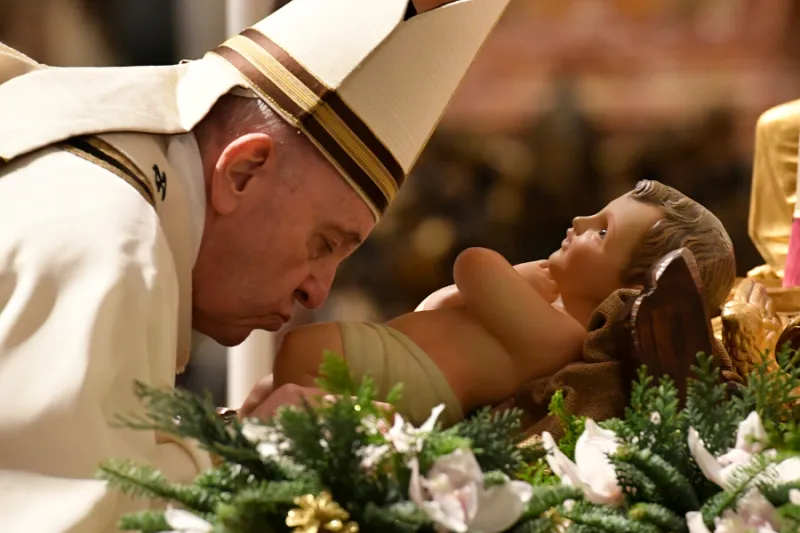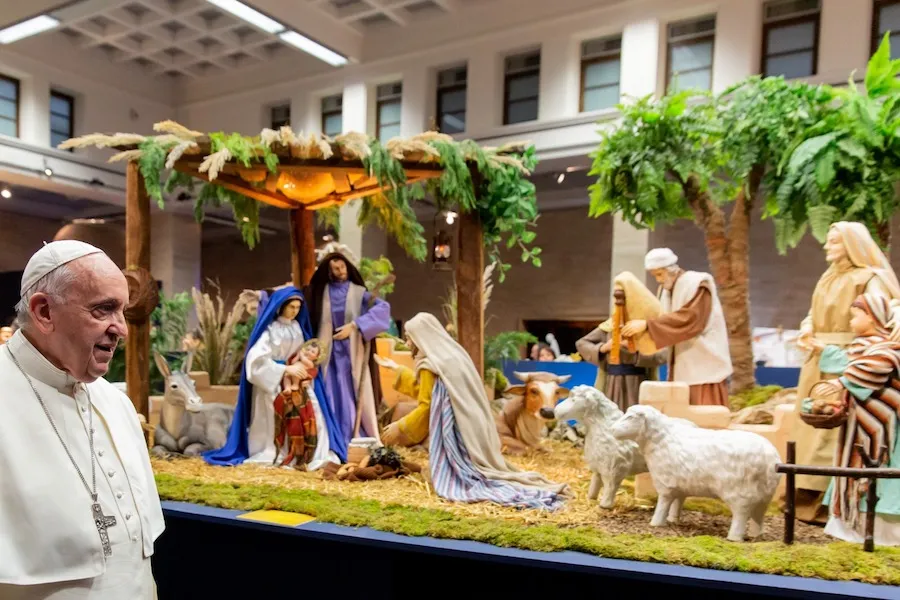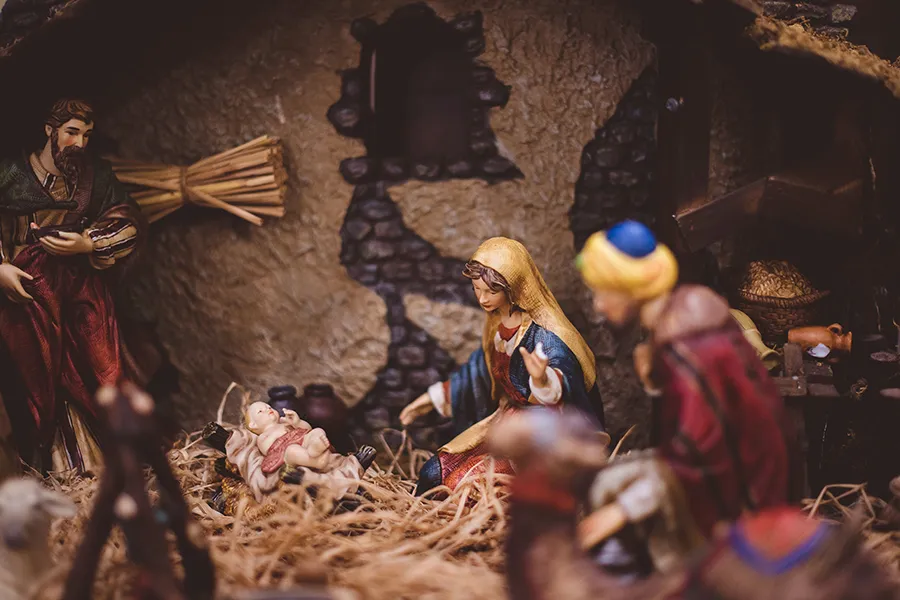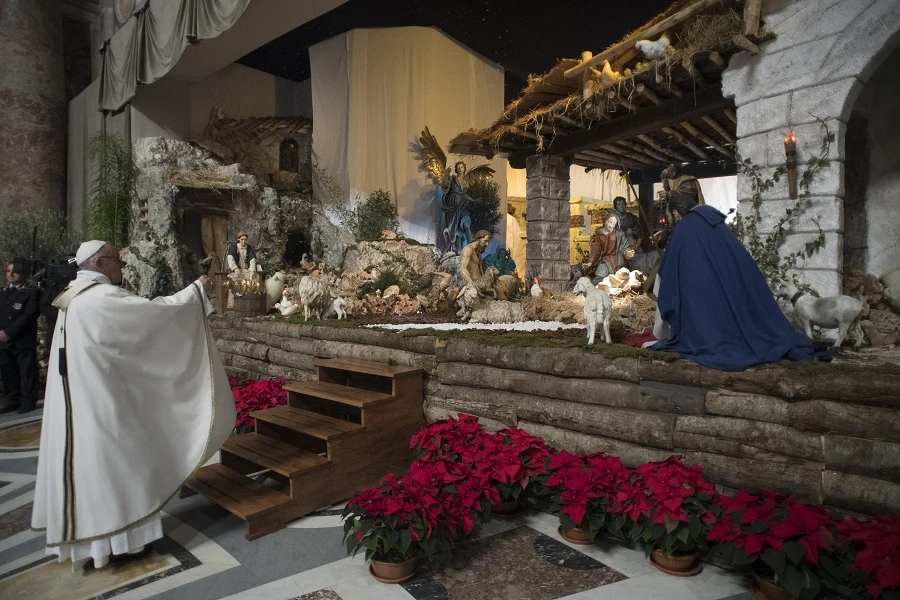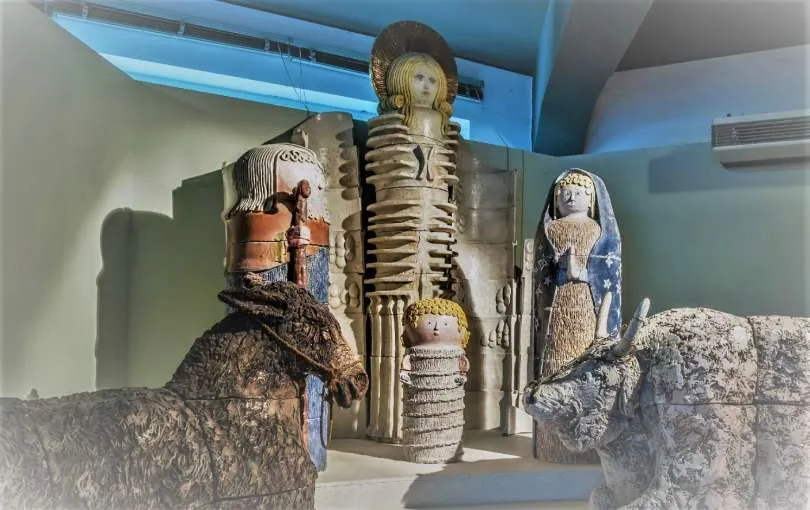
In Advent and Christmas our thoughts turn, naturally, to the baby Jesus and his Mother, the Blessed Virgin Mary. Most people think this time of year is about the miraculous birth of Our Lord, Jesus Christ. And so people put up manger scenes with shepherds, angels, animals, the Magi, and of course the Holy Family with little baby Jesus in the manger at the center.
And yet the Mass readings for the first and second weeks of Advent present quite a few days in which the Gospel features stories about John the Baptist—either with John himself as the protagonist, or with Jesus discussing John the Baptist and his significance.
Because of this, I’ve put a sign on my office door. I found an icon of John the Baptist online, emaciated, holding his own head on a platter, and I superimposed the text, “John the Baptist is the Reason for the Season.” Proving Flannery O’Connor’s dictum that we ought to employ the grotesque in an age grown numb to the Gospel, it gets my students’ attention and leads to good, productive conversations about the true meaning of Advent.
Most of those who are reading this are aware—unlike those running the nation’s big box stores—that Christmas does begins not right after Halloween but on December 25, that the season of Advent is prior to it, being the penitential season preparing for Christmas. And yet it’s always helpful to go deeper, to probe what the Church is teaching us through the liturgy and its calendar.
Why does John the Baptist figure so prominently in the earlier days of Advent? Two reasons: First, Advent deals not only with Jesus’ first coming as the babe of Bethlehem in the middle of salvation history, but also with his second coming at the end of salvation history. Second, John the Baptist is the last of the old covenant prophets and, as such, is Jesus’ forerunner in birth, message, and death.
Advent means “coming,” and prepares for Jesus’ coming. He came as a baby, God incarnate on earth. But with the presence of readings about John the Baptist in Advent, the Church is also teaching us to prepare for his second coming. The Gospel texts about John the Baptist paint him as a fiery apocalyptic prophet convinced the mighty one coming after him, Jesus, would bring about the end of the world and usher in the kingdom of God. That’s why the Church’s lectionary for Advent also presents Gospel texts about Jesus preaching about the kingdom and healing. Advent is meant to help us get our spiritual lives tuned up so that we’re ready when he comes back for good, for real, to conquer sin, death, hell, and the devil once and for all.
But the Gospel of Luke in particular is concerned to present John as Jesus’ forerunner, not only as an adult but also as a baby. Both John and Jesus are conceived under miraculous circumstances. Elizabeth is old and barren, while Mary is young and a virgin. Neither should be having children. But God opens the wombs of each of these holy women, and thus Elizabeth’s conception of John paves the way for the Virgin’s conception of Jesus. And so when the holy women meet in the Visitation, John the Baptist leaps in his mother’s womb for joy at meeting our Savior in Mary’s holy womb.
When they’re grown, John and Jesus preach the same message, the message that Jesus is the agent of the coming kingdom of God, in which all diseases will be cured, all demons and the devil banished, all the oppressed released as oppressors suffer their punishment, all death conquered as the saints are raised to eternal life.
It is thus no accident that John and Jesus suffer the same fate. John is beheaded and Jesus crucified at the whim of craven political rulers installed by Rome, Herod Antipas and Pontius Pilate. Both men at the outset hesitate to have John and Jesus executed, but when push comes to shove, decide it’s more expedient to kill them than to risk their own power and position.
Advent, then, points to the reality that Catholicism is a faith not simply of martyrs but of martyrdom. The Gospels stress that the fallen world is fundamentally hostile to God, Jesus, and the Church. St. Luke has the angel warn Mary that a sword shall pierce her own heart, and St. Matthew relates the story of Herod the Great’s slaughter of the innocents for this reason.
And so Advent prepares us not merely to welcome and worship little baby Jesus, but to accept Jesus’ call to us to take up the cross and follow him. Our lives may be marked by suffering and martyrdom, but ultimately his coming and our salvation are certain.
(Editor’s note: This essay was posted originally on December 5, 2016.)
If you value the news and views Catholic World Report provides, please consider donating to support our efforts. Your contribution will help us continue to make CWR available to all readers worldwide for free, without a subscription. Thank you for your generosity!
Click here for more information on donating to CWR. Click here to sign up for our newsletter.






